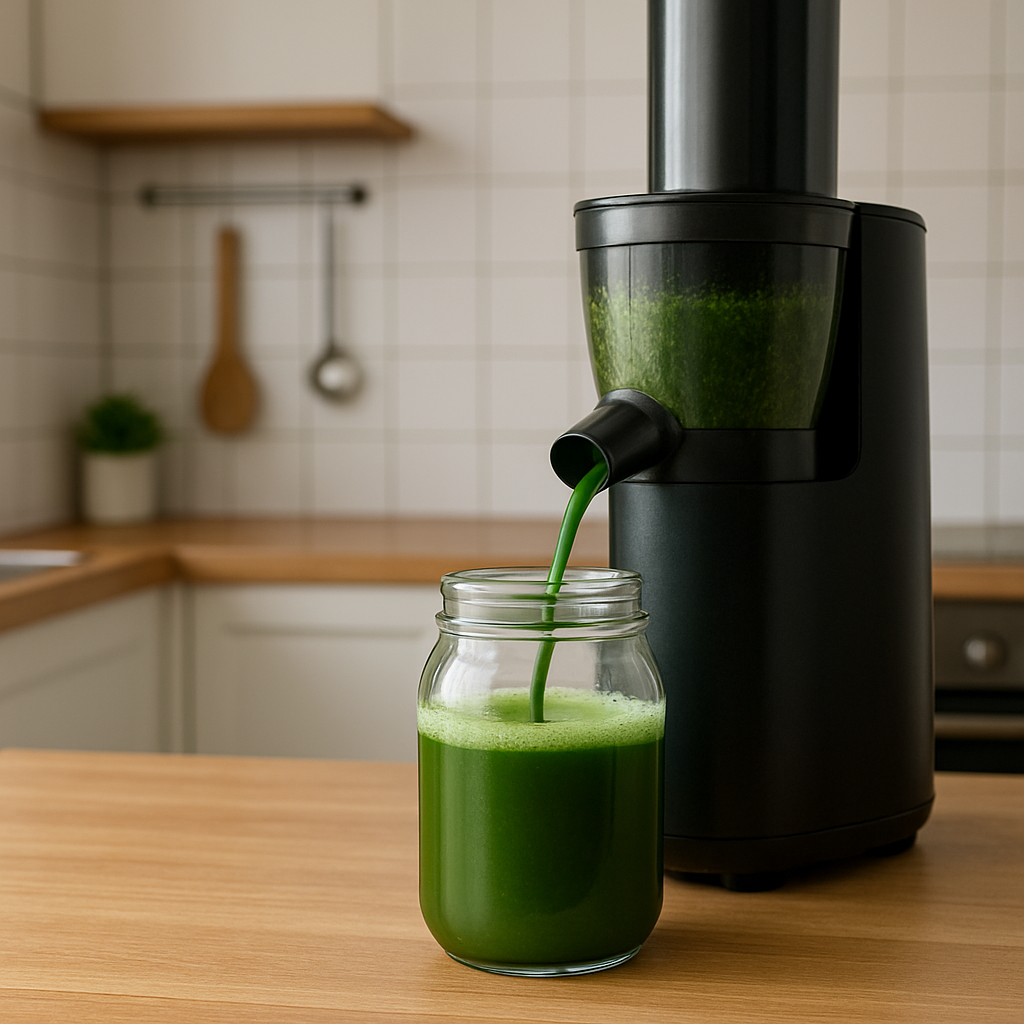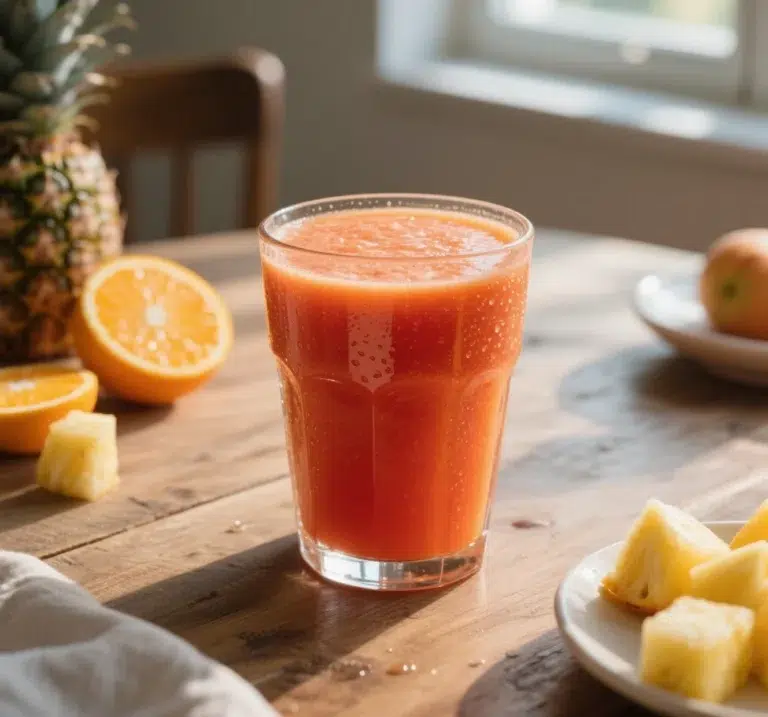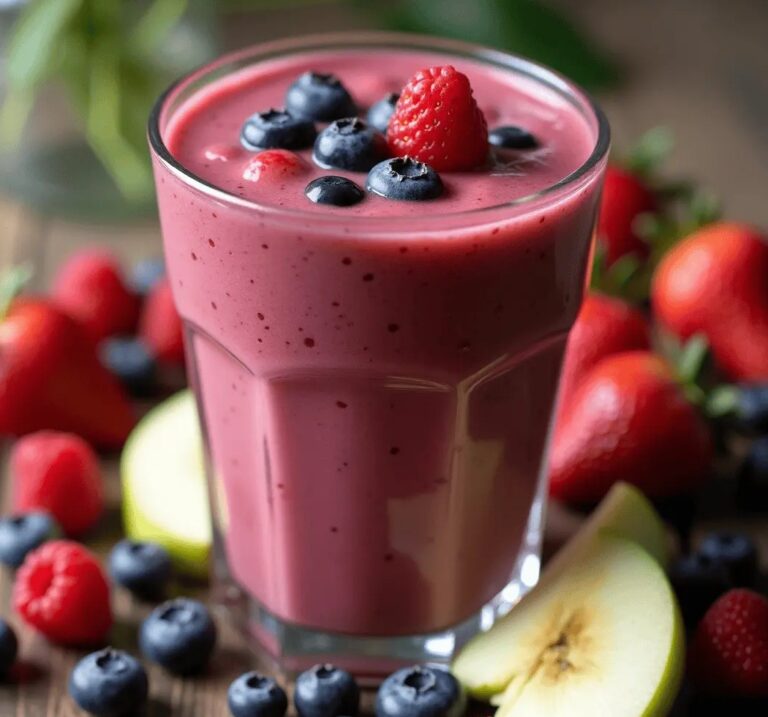Green Juice – The Ultimate Guide to Benefits, Energy, and Daily Use
Looking for an easy way to boost your energy, improve your skin, and support your digestion—all in one glass? Green juice has become a wellness staple for a reason. Made from leafy greens, fresh fruits, and detoxifying ingredients like lemon and ginger, this vibrant drink is packed with essential nutrients and antioxidants that help fuel your body from the inside out.
In this complete guide, we’ll dive deep into what makes this juice so powerful, how to make it at home using simple ingredients, and how it fits into your daily routine. We’ll also answer common questions, share its nutritional value, and explore how green juice contributes to glowing skin, digestion, and overall wellness.
Let’s explore how this green powerhouse works and why it deserves a spot in your fridge.
What Is Green Juice and Why It’s Trending
What Defines Green Juice?
he is a drink made by extracting liquid from green vegetables and certain fruits. It’s typically a blend of ingredients like kale, celery, cucumber, green apple, lemon, and ginger—designed to deliver a powerful dose of vitamins, minerals, and phytonutrients in a single glass. Unlike smoothies, green juices don’t contain fiber, making them easier to digest and absorb quickly.
This drink isn’t just green in color—it’s “green” in health benefits too. With anti-inflammatory properties, alkalizing effects, and a rich mix of antioxidants,this juice is a go-to for people focused on cleansing, immunity, and better skin health.
Green Juice vs Smoothies: What’s the Difference?
While both are packed with nutrients, the big difference lies in fiber content and digestion:
| Feature | Green Juice | Green Smoothie |
|---|---|---|
| Fiber | Low (pulp removed) | High (uses whole fruits/veggies) |
| Digestion | Fast absorption | Slower, sustained digestion |
| Texture | Thin, light | Thick, filling |
| Use Case | Quick detox, hydration | Meal replacement or snack |
he is often preferred during detox phases or morning routines, while smoothies are great for more filling, fiber-rich meals.
Why Is this Suddenly Everywhere?
There’s a reason you’ve seen this flood your social feed and local cafes. Wellness trends are shifting toward natural healing, anti-aging, and gut health, and green juice fits perfectly into that picture.
A few reasons why it’s booming:
- Celebs and influencers swear by its glow-enhancing power
- It supports digestive wellness and alkalinity, which many people now prioritize
- People are replacing caffeine with natural energy sources, and green juice delivers that
- It’s a simple way to eat more greens without cooking
Don’t miss our Banana and Peanut Butter Smoothie if you want a fiber-rich blend alongside your juice routine.
Key Benefits of Drinking Green Juice Daily
How Green Juice Boosts Your Energy and Focus
Green juice isn’t just a trendy health fad—it’s a natural energy booster. Unlike coffee or energy drinks that spike your caffeine levels and crash later, green juice fuels your system with essential vitamins like B6, C, and iron, helping your body produce energy more efficiently.
The iron from kale and the enzymes from fresh produce like apples and cucumbers increase oxygen flow, which may improve mental clarity and physical stamina throughout the day. If you’re looking for a morning ritual that doesn’t involve caffeine jitters, a glass of green juice can give you that clean, focused energy.
Skin Health, Detox Support, and Natural Glow Benefits
Glowing skin isn’t just about skincare products—it starts from within. Ingredients in green juice like cucumber and lemon have high water content, which helps with hydration and detoxification. Kale and celery are loaded with antioxidants and vitamin C, which are known to promote collagen production and reduce oxidative stress, helping you maintain youthful, radiant skin.
The chlorophyll in leafy greens also helps your liver break down toxins, supporting your body’s natural detox systems. With consistent use, many users report clearer skin, fewer breakouts, and a natural glow. That’s why green juice is often part of beauty detox routines.
Check out this Avocado Egg Breakfast Toast for another nutrient-rich, skin-friendly breakfast idea.
Nutrient Absorption and Digestive Health Improvement
Juicing separates fiber from the juice, allowing your body to absorb nutrients quickly without having to go through heavy digestion. That means vitamins and minerals go straight into your bloodstream. Ginger aids digestion by stimulating saliva and bile, while lemon helps with alkalizing the gut, creating a healthier environment for your digestive enzymes.
If you’re someone who feels bloated after heavy meals or struggles with sluggish digestion, starting your day with green juice can help reset your gut and support smoother digestion over time.
Want something warm yet light for digestion? Discover great ideas like this Mac and Cheese Muffins made healthier with portion control.
What Goes Into a Perfect Green Juice
Core Green Juice Ingredients and Their Benefits
Creating a powerful green juice starts with choosing the right blend of greens, fruits, and roots. While recipes can vary, the most effective green juices contain ingredients that serve both health and taste. Here’s a breakdown of the base ingredients and why they work:
| Ingredient | Benefit |
|---|---|
| Celery | Hydrating, anti-inflammatory, supports digestion |
| Kale | Rich in iron, vitamins A, C, and K, anti-oxidative |
| Cucumber | High water content, flushes out toxins |
| Green Apples | Adds natural sweetness, loaded with fiber and vitamin C |
| Lemon | Alkalizing, boosts liver detox function |
| Ginger | Aids digestion, anti-nausea, boosts metabolism |
Each of these plays a specific role in balancing nutrients and delivering maximum detox support.
Why Celery, Kale, and Cucumber Are Essentials
These three make up the nutritional backbone of most green juices.
- Celery juice became famous for its healing properties and low-calorie content. It helps flush sodium and reduce bloating.
- Kale, a dark leafy green, is a true superfood. It’s high in antioxidants and has been linked to reduced inflammation and better blood sugar control.
- Cucumber hydrates while adding volume and cooling the juice—important for balance, especially with stronger-tasting greens.
The Role of Apple, Lemon, and Ginger for Taste and Health
Let’s face it—some green juices taste like grass. That’s where apple, lemon, and ginger come in. Not only do they improve the flavor profile, but they also enhance the nutritional impact.
- Green apples provide sweetness without spiking blood sugar like refined juice additives.
- Lemon cuts the bitterness of kale while adding vitamin C to support your immune system.
- Ginger brings warmth and a spicy kick while soothing your digestive tract and boosting metabolism.
When balanced correctly, these ingredients not only help your juice taste fresh and drinkable, but they also amplify its wellness benefits. Discover great ideas like this One-Pot Creamy Tomato Pasta for a wholesome, warming post-juice meal.
How to Make Green Juice at Home (Step-by-Step)
Tools and Equipment You’ll Need
Before you start juicing, make sure you have the right equipment. Here’s what you need for a smooth, mess-free process:
- Juicer (masticating or centrifugal)
- Cutting board and sharp knife
- Glass jar with a lid (for storing juice)
- Strainer (optional for extra-smooth texture)
- Vegetable brush (to scrub produce)

If you’re new to juicing, a centrifugal juicer is faster and more affordable, while a masticating juicer extracts more juice and nutrients with minimal oxidation.
Ingredient Prep and Storage Tips
Proper prep ensures your juice is fresh, safe, and flavorful.
- Wash all produce thoroughly, especially leafy greens
- Remove celery leaves to reduce bitterness
- Cut apples in half and remove seeds
- Peel the lemon to prevent bitterness
- Keep ingredients refrigerated until use to preserve freshness
Want to try a fruity combo later in the week? Don’t miss our Tropical Mango Pineapple Juice for a sunny twist on juicing.
Step-by-Step Juicing Instructions (Recipe Included)
Here’s how to make a refreshing and balanced green juice with just six ingredients. This recipe serves one generous portion:
Ingredients:
- 4 stalks celery, leaves removed
- 2 green apples, halved
- 1 cucumber
- 6 leaves kale
- ½ lemon, peeled
- 1 (1 inch) piece fresh ginger
Instructions:
- Gather all ingredients and prep them as noted above.
- Process the celery, apples, cucumber, kale, lemon, and ginger through your juicer one by one.
- Stir well to combine flavors evenly.
- Serve immediately over ice or chilled. For later use, store in a glass jar with a tight lid in the refrigerator. Shake before drinking.
Storage Tip:
Green juice is best consumed fresh, but you can refrigerate it for up to 24 hours. Beyond that, nutrient degradation and oxidation begin.
Nutritional Facts (Per Serving):
This homemade green juice hits the sweet spot between low-calorie nutrition and real energy. You get a nutrient-rich, refreshing drink without additives or preservatives.
Nutritional Breakdown of Green Juice
Calories, Carbs, Proteins, and Fats Per Serving
Green juice isn’t just a hydrating beverage—it’s a nutritional powerhouse. One serving of homemade green juice using our six-ingredient recipe contains the following:
| Nutrient | Amount per Serving |
|---|---|
| Calories | 144 kcal |
| Fat | 1g |
| Carbohydrates | 36g |
| Protein | 4g |
With under 150 calories, it offers a low-calorie, high-impact boost for your morning or mid-day slump. Most of the calories come from natural sugars in apples and cucumber, providing clean, sustained energy without the crash.
Want a fiber-boosting side dish to complement your juice? Discover great ideas like this Vegan Buddha Bowl Recipe for a filling, plant-based meal.
Fiber and Sugar Content Explained
One common concern with juicing is the loss of fiber. Since juicers extract the juice and leave the pulp behind, fiber content is minimal compared to whole fruits or smoothies. While that may sound like a downside, it actually benefits those with sensitive digestion by reducing gut workload.
Natural sugars from green apples and lemon give green juice its mild sweetness. However, the presence of ginger and kale balances blood sugar by slowing down glucose spikes.
For individuals watching their sugar intake, you can:
- Swap one apple for spinach or parsley
- Add water to dilute sweetness
- Drink green juice on an empty stomach for quicker absorption
Comparing Green Juice to Other Popular Juices
How does green juice stack up against other commonly consumed juices?
| Juice Type | Calories (per 8 oz) | Key Benefits |
|---|---|---|
| Green Juice | 140–150 | Detox, skin, digestion |
| Orange Juice | 110 | Vitamin C, immunity |
| Beetroot Juice | 130 | Blood pressure, stamina |
| Carrot Juice | 90 | Vision, skin health |
| Pineapple Juice | 135 | Anti-inflammatory, digestive aid |
What sets green juice apart is its diversity of phytonutrients from various vegetables, giving you a broader range of benefits in a single serving. It’s more than just hydration—it’s functional nutrition in a glass.
Is It Safe to Drink Green Juice Every Day?
How Much Green Juice Is Safe?
Drinking green juice daily can be a powerful health habit—but like anything, moderation matters. A typical serving (8–12 oz) per day is generally considered safe for most healthy adults. That’s about one glass.
Too much green juice, especially if consumed multiple times a day, may lead to:
- Excess sugar intake (even from fruits like apples)
- Kidney stress from high oxalates (in kale or spinach)
- Nutrient imbalances if replacing full meals
For best results, keep it to one serving a day, preferably in the morning or mid-morning, and use it as a complement to your meals, not a substitute for food.
Who Should Avoid or Limit Green Juice?
Certain individuals should approach green juice with caution or medical supervision:
| Group | Consideration |
|---|---|
| Diabetics | May need to limit fruit content and monitor blood sugar |
| People with kidney disorders | Avoid high-oxalate greens like spinach or excessive kale |
| Pregnant women | Consult doctor about herbal or raw ingredients |
| Those on blood thinners | Kale is high in vitamin K, which may interfere with medication |
If you’re unsure, start small—maybe with a half glass every other day—and monitor how your body responds.
Best Times to Consume Green Juice for Results
Timing can amplify the benefits of green juice:
- Morning (empty stomach): Enhances nutrient absorption and detoxification
- Post-workout: Replenishes minerals and electrolytes
- Mid-afternoon: Natural energy boost without caffeine
Green Juice for Skin, Hair & Glow
Does Green Juice Really Make Your Skin Glow?
Absolutely. The glow-up isn’t just hype—it’s science. Green juice contains antioxidants, vitamins, and enzymes that support your skin’s cellular renewal, hydration, and protection from free radicals.
Here’s how it works:
- Vitamin C from kale, lemon, and apples supports collagen production
- Silica in cucumber improves skin elasticity and moisture retention
- Chlorophyll in leafy greens helps detox the blood, which can reduce acne
- Water content keeps the skin hydrated and plump
Consistent intake of green juice can lead to brighter, clearer skin in as little as 7–10 days, depending on your diet and lifestyle.
The Skin-Loving Nutrients in Leafy Greens and Citrus
Here are the superstar nutrients your skin craves—and how green juice delivers them:
| Nutrient | Source Ingredient | Skin Benefit |
|---|---|---|
| Vitamin A | Kale, celery | Helps regenerate skin cells |
| Vitamin C | Lemon, apples | Boosts collagen, evens skin tone |
| Zinc | Kale | Regulates oil production |
| Silica | Cucumber | Improves skin texture & elasticity |
| Antioxidants | All green veggies | Fights oxidative stress and aging |
This synergy of nutrients works from the inside out, targeting dullness, breakouts, and dryness. Looking for inspiration? Try our Fluffy Pancakes with Blueberries for a weekend treat packed with antioxidants.
Juices That Target Acne, Dullness, and Dryness
If you’re targeting specific skin issues, customize your green juice:
- For acne: Add parsley (antibacterial) and lemon (cleansing)
- For dry skin: Add cucumber, apple, and a splash of coconut water
- For dullness: Add pineapple for brightening enzymes and vitamin C
Green juice isn’t a miracle cure, but when paired with a nutrient-rich diet and proper hydration, it can be a game-changer for your skin.
Green Juice & Cleansing: Fact vs Hype
How Juice Cleanses Are Supposed to Work
Juice cleanses are short-term diets that replace meals with liquid nutrition, often over a period of 1 to 5 days. The idea is to give your digestive system a break while flooding your body with vitamins, minerals, and antioxidants.
Green juice plays a central role in cleanses because:
- It’s low in calories but high in micronutrients
- It helps flush out toxins and excess water weight
- It’s easy to digest, allowing your body to focus on repair
During a cleanse, most people consume 4 to 6 juices per day, spaced evenly, along with plenty of water.
Do Green Juice Detox Plans Actually Cleanse Your Body?
Here’s the truth: your body already has its own built-in detox systems—the liver, kidneys, and lymphatic system. Green juice doesn’t magically “detox” your organs, but it supports these systems by providing nutrients and reducing toxic load from processed foods.
What a good green juice cleanse can do:
- Reduce bloating
- Improve hydration and skin clarity
- Reset cravings and habits
- Increase energy short-term
However, prolonged or extreme cleanses may lead to fatigue, nutrient imbalances, or rebound eating. Instead, consider a one-day juice reset or add green juice to your morning for long-term benefits.
What to Expect on a Green Juice Cleanse
If you’re trying a green juice cleanse for the first time, here’s what to expect:
| Timeframe | What Happens |
|---|---|
| First 6–12 hours | Hunger, slight fatigue, frequent urination |
| Day 1 | Improved hydration, mental clarity |
| Day 2–3 | Possible headaches or detox symptoms |
| Day 4+ | More energy, better digestion, lighter feeling |
Tips for success:
- Ease in with light meals the day before
- Stay hydrated—drink extra water
- Listen to your body—add a snack if needed
- Ease out with soups and smoothies
Green juice isn’t a fix-all, but used mindfully, it can jumpstart a healthier lifestyle and help your body operate more efficientl
How Long Does Green Juice Last in the Fridge?
Fresh green juice is most potent when consumed immediately after juicing. That’s when the nutrients are most active and the flavor is at its peak. However, if you need to store it, here’s how to do it right:
- Use airtight glass containers, like mason jars
- Fill to the top to minimize air exposure (oxidation)
- Refrigerate immediately after juicing
Green juice will typically last up to 24 hours in the fridge. Beyond that, it begins to lose flavor, color, and nutrients. If the juice changes smell or texture, it’s best to discard it.
For those on the go, making juice in the evening and consuming it the next morning is safe—just remember to shake it well before drinking.
How to Store Green Juice for Maximum Freshness
Here are a few quick storage tips to retain the most nutrients:
| Storage Tip | Why It Works |
|---|---|
| Store in dark glass jars | Protects nutrients from light degradation |
| Add a splash of lemon | Slows oxidation with vitamin C |
| Vacuum seal if possible | Removes oxygen and preserves freshness |
| Keep cold at below 40°F | Slows down nutrient loss |
Avoid plastic bottles—they may leach chemicals and don’t preserve freshness well.
Using Leftovers and Composting the Pulp
One of the downsides of juicing is the leftover vegetable pulp—but don’t toss it! You can use it in:
- Soups or broths for added fiber
- Veggie muffins or breads
- Homemade veggie burgers or patties
If you don’t cook with it, consider composting the pulp to reduce waste and nourish your garden. This closes the sustainability loop and turns every glass of green juice into an eco-friendly habit.
How much green juice is safe to drink?
For most healthy adults, one 8 to 12-ounce glass per day is safe and effective. Drinking more than that could lead to excess sugar or oxalate intake, especially if consumed long-term. Always listen to your body and consult your doctor if you have any health concerns.
Does green juice give you energy?
Yes, it does—but naturally. Green juice delivers energy through hydration, natural sugars, and micronutrients like vitamin C and iron. Unlike caffeine, it provides a clean, sustained energy boost without the jitters or crash.
What is the green juice made of?
Green juice is typically made from a blend of leafy greens, fruits, and detoxifying roots. A classic recipe includes celery, kale, cucumber, green apple, lemon, and ginger. These ingredients are chosen for their vitamin content, flavor, and cleansing properties.
What is the purpose of drinking green juice?
People drink green juice to:
Detoxify their system
Support digestion
Boost energy naturally
Improve skin clarity
Increase vegetable intake
It’s a convenient way to nourish your body without heavy meals or processed ingredients.
How long does green juice last?
Fresh green juice lasts up to 24 hours in the refrigerator if stored in an airtight glass jar. After that, nutrient levels start to drop and oxidation affects flavor and texture. For best results, drink it as soon as possible after making it.
How do juice cleanses work?
Juice cleanses temporarily replace solid foods with nutrient-dense juices. The idea is to give your digestive system a break while still feeding your body with vitamins and enzymes. They can help reset cravings, reduce bloating, and kickstart healthier habits, but should be done short-term and with medical awareness.
Making Green Juice Part of Your Lifestyle
Green juice isn’t just another health trend—it’s a practical, powerful way to nourish your body and mind daily. With just a handful of fresh ingredients, you can boost your energy, hydrate your skin, support digestion, and fuel your immune system.
Whether you’re doing a one-day juice reset, starting your mornings with a nutrient boost, or simply looking to eat more greens without the hassle, green juice offers a natural, low-effort solution.
Start simple. Drink it fresh. And remember—it’s not about being perfect; it’s about building habits that feel good.
Print
Green Juice – The Ultimate Guide to Benefits, Energy, and Daily Use
- Total Time: 10 minutes
- Yield: 2 1x
Description
A vibrant green juice recipe made with celery, cucumber, kale, green apple, lemon, and fresh ginger. Packed with vitamins and antioxidants, it’s the perfect daily detox for energy, skin clarity, and digestion.
Ingredients
- 4 stalks celery, leaves removed
- 2 green apples, halved
- 1 cucumber
- 6 kale leaves
- ½ lemon, peeled
- 1 (1-inch) piece fresh ginger
Instructions
-
Prep all ingredients: Wash thoroughly, remove apple seeds, peel lemon, and cut everything to fit into your juicer.
-
Juice: Process celery, apples, cucumber, kale, lemon, and ginger through a juicer one by one.
-
Serve: Pour into a glass and enjoy immediately.
-
Storage: To store, transfer to an airtight glass jar and refrigerate. Shake well before drinking. Best consumed within 24 hours.
- Prep Time: 5 minutes
- Cook Time: 5 minutes
- Category: juices
- Method: Juicing Method
- Cuisine: Italian-American
Nutrition
- Serving Size: 1 large glass (approx. 12 oz)
- Calories: 144 kcal
- Sugar: Natural from fruits
- Fat: 1g
- Carbohydrates: 36g
- Fiber: Minimal (juice form)
- Protein: 4g




